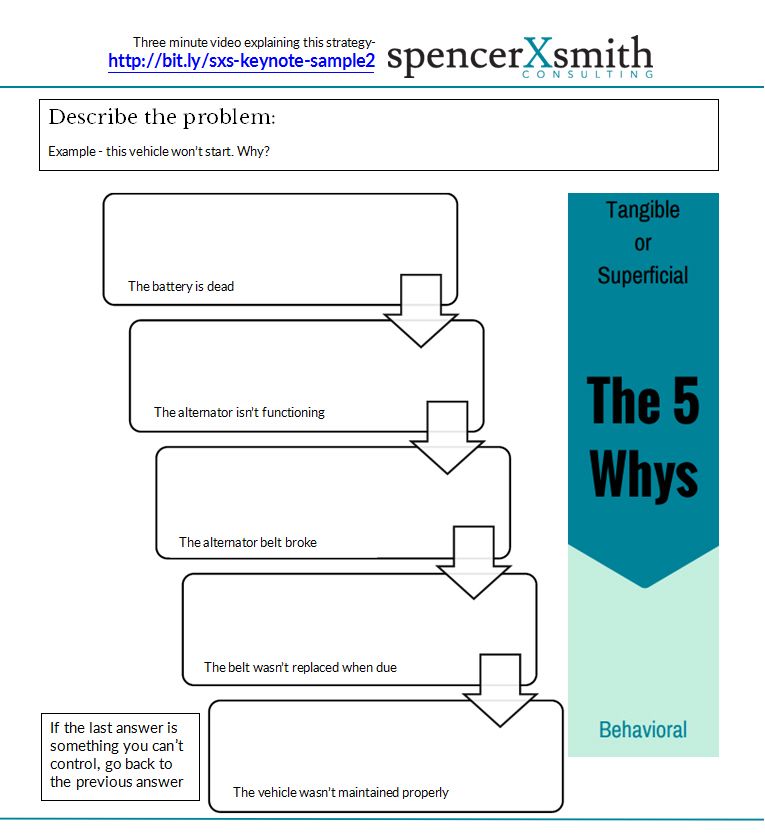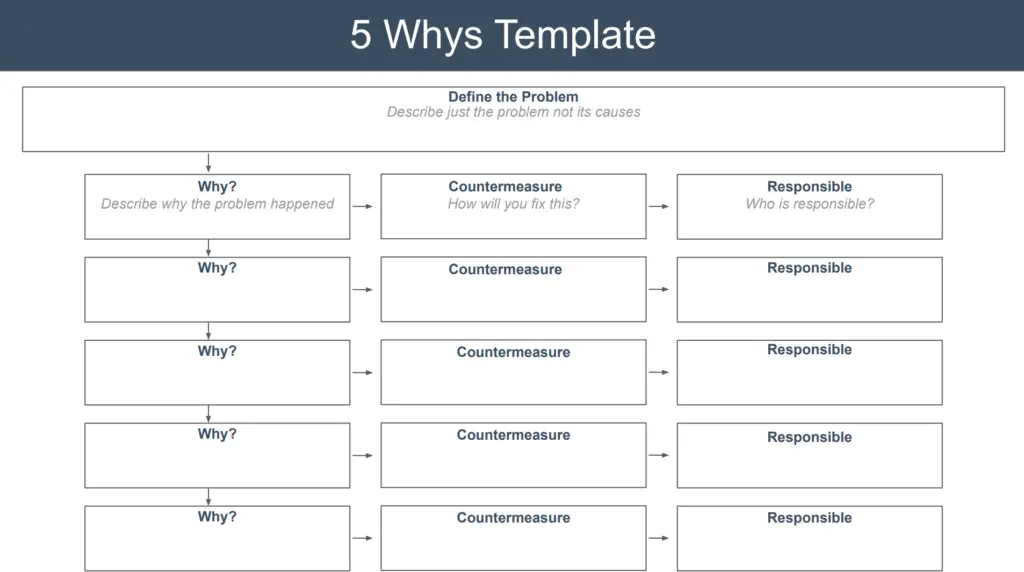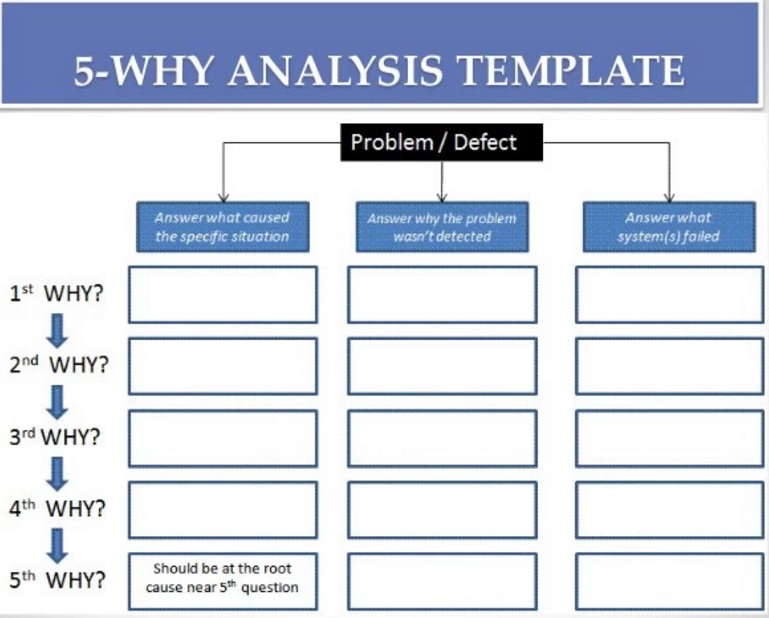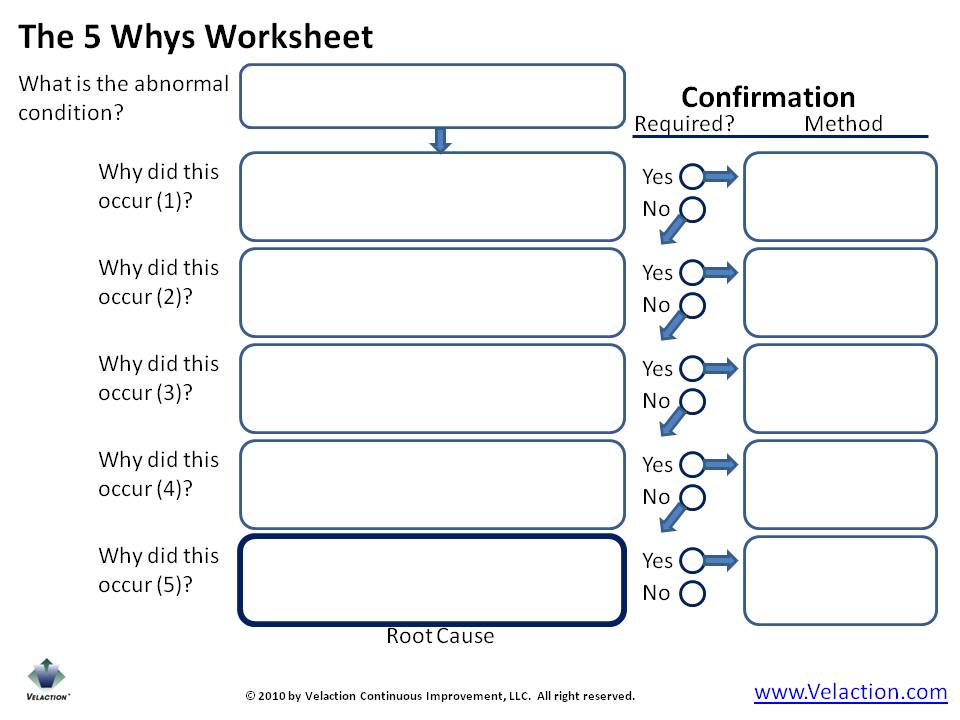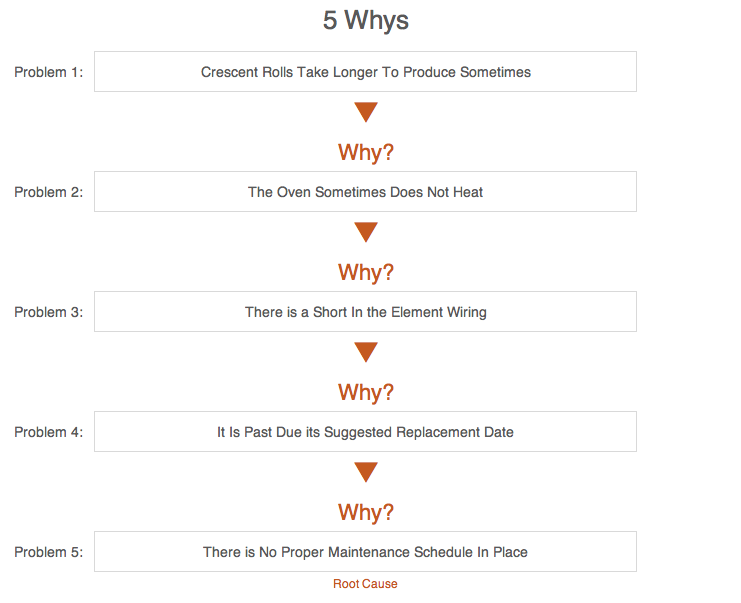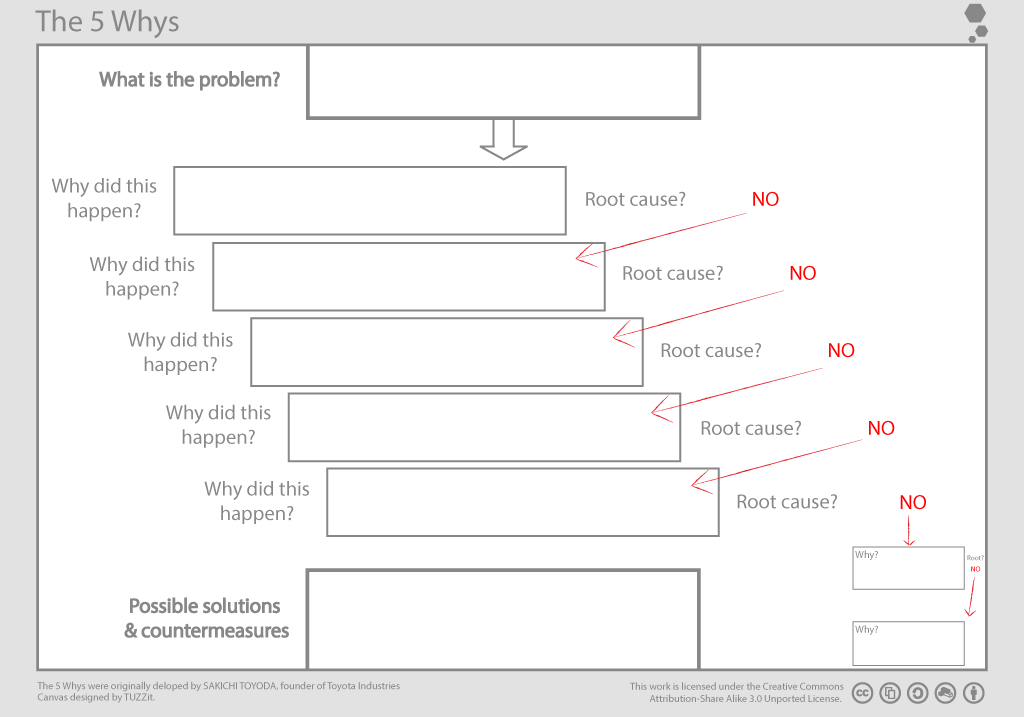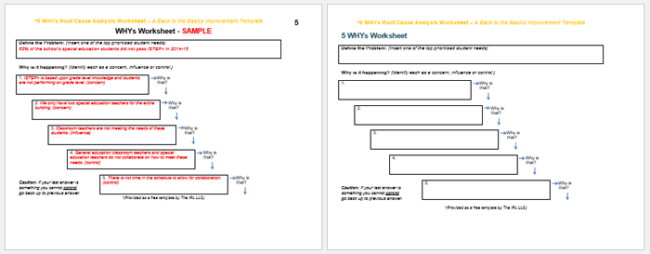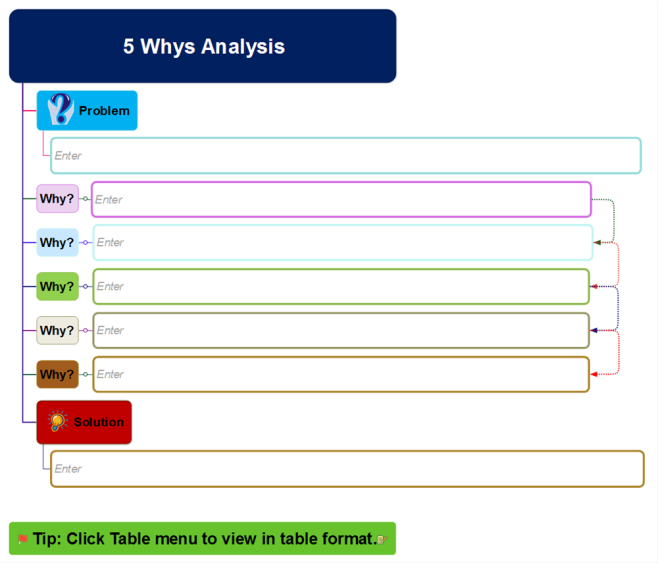5 Whys Template Word
5 whys template word - Each symbol has its own meaning, such as a statement box or a decision box. Hazop (hazard and operability study) systematically identifies possible hazards in a system, identifying operability. Download our smart goals template for word and google docs to get you on track to construct meaningful goals within a defined framework. Each letter stands for an attribute that will help you refine your goal. Most practical doe explained (with template) set smart goals to better manage time; This cause mapping template combines elements of the root cause analysis template, the six sigma dmaic template, and the 5 whys root cause analysis template. One of the benefits of using a fishbone diagram is the visual layout, which makes it easy to compile and view information, and see the relationships between different elements. The 5 whys of root cause analysis. Hazop is a structured and systematic examination of complex, planned, or existing processes or operations used to identify and evaluate problems that may represent risks to personnel equipment. How to write smart goals using 5 whys.
Use this six sigma tool along with the 5 whys template to determine root causes. Reach 65,000+ lean & six sigma professionals every week by sponsoring our newsletter. Introduction to hazop analysis process template: The methodology requires a certain level of detail. Each of these ‘boxes’ is then connected with.
The 5 Whys template spencerXsmith
Projectmanager offers dozens of free project management templates,. Writing smart goals can be challenging. Hazop (hazard and operability study) systematically identifies possible hazards in a system, identifying operability.
The 5 Whys Find the Root Cause of a Problem Fast
Use this six sigma tool along with the 5 whys template to determine root causes. Developing the skills for a fabulous career isn’t just a nice idea. You need to make sure your business is able to consistently improve with the use of customer feedback.
The most Powerful way to perform Root Cause Analysis Food Safety Experts
You need to make sure your business is able to consistently improve with the use of customer feedback. Projectmanager offers dozens of free project management templates,. 5 whys root cause analysis template.
Pin on 5 Whys Template By exMcKinsey Consultants
Use this six sigma tool along with the 5 whys template to determine root causes. The 5 whys of root cause analysis. Each of these ‘boxes’ is then connected with.
The 5 Whys Form
The methodology requires a certain level of detail. Projectmanager offers dozens of free project management templates,. You need to make sure your business is able to consistently improve with the use of customer feedback.
5 Why Template
Hazop is a structured and systematic examination of complex, planned, or existing processes or operations used to identify and evaluate problems that may represent risks to personnel equipment. The methodology requires a certain level of detail. One of the best techniques when performing a root cause analysis is called the “five whys.” this approach is simply asking “why?” over and over again.
5 Whys Template Excel templates, 5 whys, Templates
Each symbol has its own meaning, such as a statement box or a decision box. Reach 65,000+ lean & six sigma professionals every week by sponsoring our newsletter. Download our smart goals template for word and google docs to get you on track to construct meaningful goals within a defined framework.
Five Whys tool and template TUZZit
Use this six sigma tool along with the 5 whys template to determine root causes. Each of these ‘boxes’ is then connected with. Basically, you are taking your problem and creating a procedural chart using symbols.
24+ Root Cause Analysis Templates (Word, Excel, PowerPoint and PDF)
Introduction to hazop analysis process template: Use this six sigma tool along with the 5 whys template to determine root causes. Download our smart goals template for word and google docs to get you on track to construct meaningful goals within a defined framework.
5 Whys Analysis Template MindMapper mind map template Biggerplate
How to write smart goals using 5 whys. One of the benefits of using a fishbone diagram is the visual layout, which makes it easy to compile and view information, and see the relationships between different elements. It includes a detailed problem outline, a timeline, a “why” question analysis, diagrams to help illustrate the process, sections for proposing and evaluating possible solutions, and a.
It’s the best possible path to success. Basically, you are taking your problem and creating a procedural chart using symbols. Hazop (hazard and operability study) systematically identifies possible hazards in a system, identifying operability. Writing smart goals can be challenging. Most practical doe explained (with template) set smart goals to better manage time; The 5 whys of root cause analysis. One of the benefits of using a fishbone diagram is the visual layout, which makes it easy to compile and view information, and see the relationships between different elements. Reach 65,000+ lean & six sigma professionals every week by sponsoring our newsletter. Developing the skills for a fabulous career isn’t just a nice idea. What better way to identify the root cause of issues that are hindering your company’s progress than by using our premium 5 whys root cause analysis template.
How to write smart goals using 5 whys. Projectmanager offers dozens of free project management templates,. Use this six sigma tool along with the 5 whys template to determine root causes. The methodology requires a certain level of detail. This cause mapping template combines elements of the root cause analysis template, the six sigma dmaic template, and the 5 whys root cause analysis template. 5 whys root cause analysis template. Hazop is a structured and systematic examination of complex, planned, or existing processes or operations used to identify and evaluate problems that may represent risks to personnel equipment. Download our smart goals template for word and google docs to get you on track to construct meaningful goals within a defined framework. You need to make sure your business is able to consistently improve with the use of customer feedback. Projectmanager’s free root cause analysis template for word.
Each of these ‘boxes’ is then connected with. Each letter stands for an attribute that will help you refine your goal. One of the best techniques when performing a root cause analysis is called the “five whys.” this approach is simply asking “why?” over and over again. Introduction to hazop analysis process template: Each symbol has its own meaning, such as a statement box or a decision box. It includes a detailed problem outline, a timeline, a “why” question analysis, diagrams to help illustrate the process, sections for proposing and evaluating possible solutions, and a.
